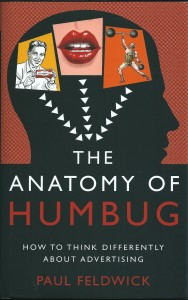The one sentence summary
It is vital to think about how you think about advertising, because many assumptions often taken for granted may well be misleading.
WHAT THE BOOK SAYS 
- We need to think differently about advertising.
- All theories of how it works have their uses, and all are dangerous if taken too literally as the truth.
- The advertising industry will only be able to deal with increasingly rapid change in the media landscape if it both understands its past and is able to criticise its most entrenched habits of thought.
- Humbug is the word PT Barnum used to describe the publicity he created.
- The author reviews the history of communication, from Barnum to Paul Watzlawick, Bernbach, Reeves and Ogilvy.
- The advertising industry has three main stories about its past:
1. The Enlightenment Narrative: The past was primitive, but now we are enlightened.
2. The Golden Age Narrative: The world has changed so much that the past is irrelevant.
3. The Year Zero Narrative: Fundamental changes are happening right now.
- None are very helpful in working out how advertising really works.
- Thinking differently about advertising is important.
WHAT’S GOOD ABOUT IT
- There are lots of ways at looking at how advertising works, and the author highlights six.
1. Salesmanship: factual selling propositions, getting attention, message recall.
2. Seduction: understanding motivation, emotion, art, being liked.
3. Salience: fame, familiarity, weight of publicity, keeping your name before the public.
4. Social Connection: it is impossible not to communicate, and it doesn’t take place as a single, one way transmission but a continual exchange.
5. Spin: creating a relationship through PR.
6. Showbiz: pure publicity for the sake of it, warts and all.
- Beware Meaningless Distinctiveness – finding tiny differences to accentuate in brand messages, when in fact everyone buys from a portfolio of large known brands anyway.
“It’s like love – the more you analyse it, the more it disappears.”
Bill Bernbach
WHAT YOU HAVE TO WATCH
- This is a pleasant run through the roots of advertising but, by the author’s own admission, it doesn’t reach a conclusion.
